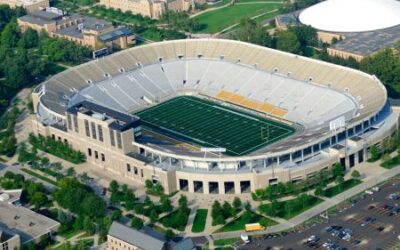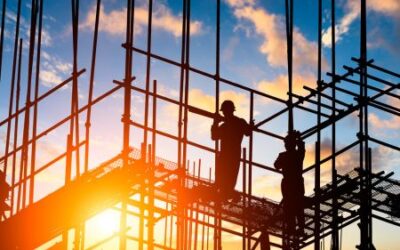New opportunities for multimodal freight, rail, and port projects are being announced frequently because federal funding is now available to support roadway infrastructure, specifically supply chain projects.
In 2022, federal officials announced $1.5 billion in new funding for these types of infrastructure projects. Congress designated the funding to flow through the U.S. Department of Transportation (USDOT) INFRA grant program. While there are numerous funding options for transportation projects, this program focuses on initiatives designed to transform transportation networks through roads, ports, rails, and bridges -projects critical for streamlining the distribution of goods and supporting better transportation infrastructure for Americans.
The first grant allocation of $1.5 billion will support 26 major transportation projects nationwide. Although funding and support are now available, many large projects are still in the planning phases, with launch dates scheduled for 2024.
The U.S. DOT also oversees the Infrastructure for Rebuilding America (INFRA) grant program, and it focuses on projects designed to improve the nation’s supply chain resiliency, improve critical freight movements, and/or prevent distribution bottlenecks across the nation. These two funding programs have provided abundant revenue for projects such as the ones described in this column.
Long Beach, California officials will oversee a $1.567 billion project designed to improve rail access to port shipping terminals. The stated objective is to make the movement of goods between cargo ships and trains more efficient and to expand and strengthen the current port railyard. The expanded railyard will provide the space required for longer trains – thereby increasing the port’s commercial efficiency. The first initiative will involve the construction of a locomotive facility that will offer a 10,000-foot-long track. With an expanded railyard and its accompanying longer tracks, fewer trucks will be required, and the improved rail system will expedite the movement of goods from the entire San Pedro Bay ports complex. Construction will begin in 2024.
Photo of the Wisconsin River bridge. Courtesy of Columbia County.
A $141 million port project in Wisconsin will focus on a bridge located in Columbia County. The Wisconsin River bridge serves as an important route linking key economic hubs, including Madison, Milwaukee and Chicago. The upcoming project will include the construction of two new bridges. One will be located east of the existing bridges and the other will be constructed at approximately the same location as the existing bridges. This replacement project will not only address the declining state of the bridges but also bypass future lengthy repair projects that would negatively impact supply chains. Currently, transport trucks represent a large percentage of traffic on the bridges, resulting in delays and reduced efficiency. Both issues will be addressed by the reconstruction and widening of two county roads that will link to the new bridges. Construction is slated for 2024.
The federal government recently allotted $6.88 billion in funding to the Gateway Hudson River Tunnel Project. The overall cost of the effort, however, is projected to be $17.18 billion. The project includes the construction of a second rail tunnel under the Hudson River to connect major hubs of northern New Jersey to New York City. Commuter wait times will be reduced, and the project will stimulate economic vitality and commercial growth in the region. The original tunnel, built in 1910, cannot accommodate the high commuter demand, delays, and bottlenecks that have become common. There was also damage to the tunnel from saltwater flooding during Hurricane Sandy in 2012. Components of the project will also address the tunnel’s overall structure, including its tracks, concrete, and electrical systems. Construction is scheduled to begin in 2024.
A longer-range project in Chicago will focus on restructuring the Chicago Railyard. A design firm will soon be named to assist with planning for this considerable effort. A collaborative program, CREATE, allows the city of Chicago, Cook County and numerous regional organizations to work together. This coalition was instrumental in obtaining the $4.6 billion in federal funding to enhance Chicago’s rail system. Planned improvements will include replacing or restoring approximately 100 bridges and related structures across Cook County. Some rail tracks will be reconfigured to prevent congestion caused by track crossings. The Belt Junction rail area will be eliminated, and that initiative carries a $132 million cost projection. The elimination also includes the construction of new tracks and improved efficiency.
California seems never to be left out regarding new rail projects. A $74 million effort to improve efficiency in Riverside is currently in design with a scheduled start date of 2025. Caltrans will oversee a project to separate the area’s railway and highway. The objective is to facilitate the movement of goods and enhance other transportation through the San Bernardino subdivision by constructing a new four-lane underpass and removing the grade crossing. This project will construct a new four-lane underpass, removing the at-grade crossing. The three existing mainline tracks will be relocated, and a fourth track will be added. Other improvements will include a raised median, bike lanes, retaining walls and road realignment at the intersection. The initiative will also include new retaining walls, realignment of the canal and canal siphon, a stormwater pump station, and utility relocations.
Large projects such as these will have numerous other requirements a multitude of subcontracting needs, along with products, technology, and equipment of all types. There is no doubt that economic vitality will be boosted in each region as these infrastructure initiatives roll out over the next several months.






